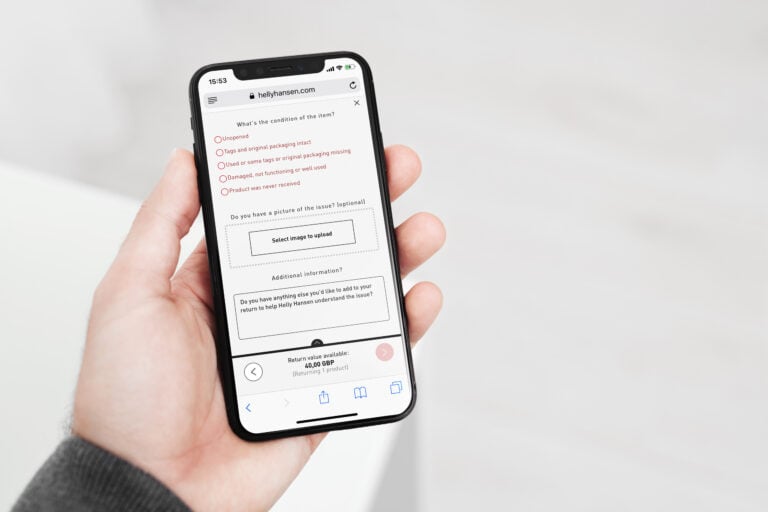
2020 was the year when everything and everyone stopped and then had to adjust to a whole new ‘normal’. The year continues to be unprecedented. Global manufacturing, transportation and even raw material sourcing stopped for a while in 2020. Some even say that global supply chains have not been this drastically disrupted since the Second World War.
Given this new normal, what is the global retail industry to do as we are entering one of the busiest times of the year? The best tactics to plan for 2020’s holiday season are simply variations of tried and true practices. There is nothing magical about these steps. In fact, you will most likely recognize them all because they are already part of your toolkit.
Let’s dive into some actions you can take this holiday season.
1. Communicate, and communicate a little more
You are most likely already doing this, but increasing the frequency of communication with everyone, from your suppliers to your customers, will not hurt anyone.
Are items delayed due to unavailability (due to Covid-19)? Say it.
Is the warehouse receiving many orders at the moment? Tell us.
It is frankly impossible to over-communicate – as long as it is sincere and relevant, and one of the worst mistakes one can make is to under-communicate when there is massive change taking place. While on a normal day, this is generally appreciated.
2. Extend returns window for Christmas
Another thing on the list of things to do: extend your returns window for the Holidays. This is also something you most likely are planning on doing – but I want to make sure that it is not forgotten. See this as a friendly reminder.
As you know, the returns window’s length varies depending on industry, type of products along with other factors. There are also a great many factors that neither you nor your customers can affect such as: delivery times or the local postal service due to the massive quantity of packages at this time of year.
Find the right amount of days that works best for your returns window. Maybe it is to allow returns during the entire month of January. Maybe it is allowing returns for an extra 10 days.
Just make sure it is longer than your regular window.
3. Returns policy — easy to find, read and understand
Sometimes, scrolling through a website searching for a returns policy is not the easiest task. Therefore, when you know, for example during peak season, a lot of website visitors are looking for the returns policy – make it easy to find. Always, and I say always, keep it in the footer of your website, and if possible, add it to more places.
And secondly, write it so people can understand it. In a language they understand. Like a person wrote it, not a lawyer. Simply put: do not give customers a reason to contact you because they do not understand the policy.
4. Allow customers to register returns online
Did you know that a manual return takes on average 20 minutes in handling time? Did you also know that you could reduce that number to about 5-10 seconds per return?
Our data shows that during high engagement campaigns re-conversion rates and exchanges can increase with up to 80%.
Curious to know more? Here is how.

Allowing shoppers to:
- Register a return (or exchange) online through a returns system
- Select preferred shipping method
- Access the correct shipping label
This is not only good for the customer, but for your warehouses, customer service and inventory count, too.
The customer will never know they are using a third-party solution, as the entire consumer dialogue is customized to match your branded guidelines.
Once the package reaches the warehouse, all the information about the return is already registered in the system, and can be accessed in a second by scanning the barcode (or QR code) on the shipping label. All that is left to do is to check the item for damage and approve the return. Done. Simple, right?
You can run the entire returns organization from one place, and let each member access the information that is important to them.
It all starts with a digital return registration.
5. Enable exchanges to minimize lost revenue
Compared to in-store returns, online purchases are 3 times more likely to result in a return. And during Christmas, returns spike.
- One person received the same pair of shoes from her mom and grandpa.
- Another person had already outgrown that pretty dress.
- A third person received the coffee table he wanted, but in the wrong colour.
By enabling customers to return a product and select another item, size, colour or to receive a voucher for the remaining amount increases the likelihood of keeping the business by 30%. During Christmas, even more so.
Have you considered including exchanges in your returns policy, maybe now is the perfect time to implement it. We are happy to help!
Summary: The perfect holiday return process
To summarize,
- Don’t forget the importance of communication! Rather one time too much, than one time to little.
- Extend your normal return window during December and January! Give shoppers some extra time to return or exchange items.
- Locate your return policy in places where it is easy to locate on your website – and make sure everyone understands what it says.
- Save massive amounts of time by letting shoppers register the return online before selecting shipping method to send it to your warehouse.
- Use exchanges to minimize lost revenue!
If you make sure to take these five points to heart, you can be sure this Holiday season will bring you a great deal of joy along with great savings.
About the author




